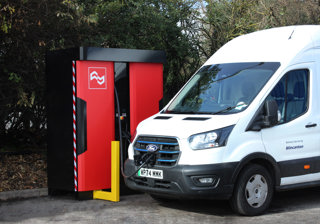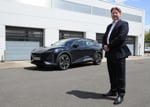
Fleet FAQ
Q:
How do I encourage drivers to switch to electric vehicles (EVs)?
A:
While the number of company car and van drivers switching to electric vehicles (EVs) is increasing rapidly, many remain reluctant to make the switch.
This could because of unfamiliarity with the technology or long-held concerns over range or the public charging network.
While some of these concerns may still be relevant, others are long-held beliefs based on negative media coverage from several years ago which, thanks to the development of the technology, no longer ring true.
So, how can a fleet decision-maker overcome these obstacles and encourage their drivers to make the switch?
The answer, according to a spokesman at TRL, is to make the transition a simple one.
“A good general lesson from behavioural science is, if you want people to make a shift on to something new, then make it as easy and attractive as possible,” he said.
“There are a lot of features of EVs and charging which go against that, and one of those is around the knowledge and understanding of this new world and all the jargon that comes with that.
“If a fleet manager can put in place mechanisms for improving awareness and knowledge then that will definitely help: kind of myth-busting, for example, around what people hear about EVs and what’s actually true.
“A simple guide could be produced to explain how to charge and where, what the different charging speeds mean and what all the connector types mean.
“It can be quite daunting if you’ve not really engaged with that area.”
A fleet manager could also address any anxiety about range by looking at the routes a driver does, as well as the charging infrastructure available in that area.
Vinci Construction UK has adopted a similar approach as part of its parent company’s ambition to reduce CO2 emissions 40% by 2030.
It has produced guides to help drivers make the right choice for their working life and driving behaviours, says a spokesman at Vinci Fleet Services.
The fleet team also launched an EV forum on the company’s intranet, where drivers can discuss the technology.
“We’ll talk to drivers and guide them through the choices and the different battery sizes, high speed charging, and how to get a wall-mounted charging point at home,” he said.
“We have a step-by-step guide taking them through all the forms, how to decide where you want it, and the measurements they need.
A further effective way to win buy-in from drivers is for them to experience the technology for themselves.
Some leasing companies or manufacturers may be able to host roadshows, allowing employees to drive an EV, as well as be able to question experts.
“Getting first-hand experience of an EV tends to make people more positive,” says the spokesman at TRL.
“They can see the benefits, like the smoothness, the quietness and the ease in which you can drive one.
“For someone who’s on the fence or is tempted but a bit nervous about the technology, actually giving them experience driving one could tip the balance.”
> Interested in comparing electric vehicle data? Check out our EV tool.
> Interested in ensuring the efficient use of EVs. Check out our dedicated editorial sections: Insight & policy | EV news | Charging & infrastructure | Costs & incentives | Benefit-in-kind | EV case studies | EV road tests
> EVs by price: lowest to highest
















